Greens powders are one of the latest trends in the big, confusing world of supplements. The best greens powders promise to serve up a hefty dose of essential vitamins, minerals, antioxidants, and sometimes even probiotics and digestive enzymes. Whether greens powders actually work is still up for debate according to the latest research, though most experts agree that it generally can’t hurt to include more greens in your diet — even in powdered form.
Two popular greens powders include Vibrant Health Green Vibrance and AG1 Athletic Greens, the latter of which is arguably the best-known fruit and vegetable supplement available, thanks to the brand’s strong influencer partnerships. Our Green Vibrance vs. Athletic Greens guide will help you make sense of the labels on these popular supplements and decide which to buy based on your needs and preferences.
What Is Green Vibrance?
Vibrant Health Green Vibrance is a greens powder that includes more than 50 potently nutritious ingredients, including essential vitamins and minerals, powdered whole foods, probiotics, digestive enzymes, and adaptogens.
It claims to “assist your body in operating at its optimal efficiency, potentially offering enhanced energy and a boost to your immune response” and is available as both a powder and in capsule form.”
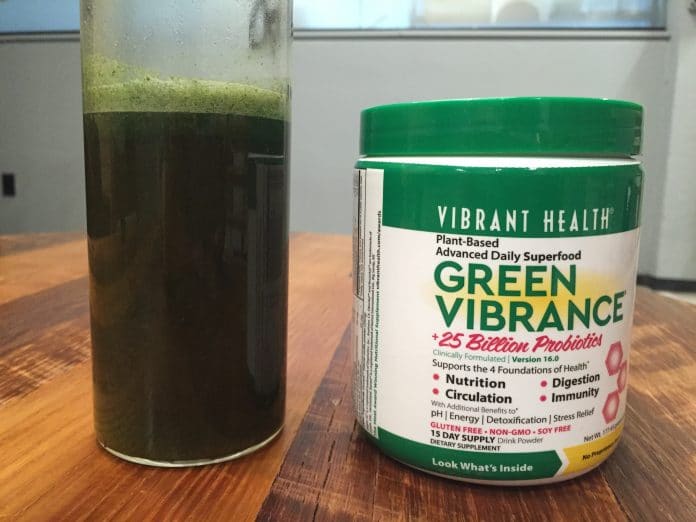
While being chock-full of potentially beneficial ingredients, Green Vibrance is free from gluten, dairy, soy, GMOs, and animal ingredients. We particularly love that there are no proprietary blends in Green Vibrance shrouding the dose of each ingredient.
[Read More: Best Fruit and Vegetable Supplements]
What Is Athletic Greens?
Athletic Greens AG1 is a purported “more-in-one” (as opposed to “all-in-one”) supplement containing dozens of ingredients in a single powder. According to Athletic Greens, the powder replaces all of these supplements:
- Multivitamin
- Multimineral
- Stress adaptogens
- Prebiotics
- Probiotics
- Antioxidants
- Superfoods
- Functional mushrooms
- Digestive enzymes
Its “not included” list is just as comprehensive: There are no artificial flavors, artificial sweeteners (it uses stevia), colors, preservatives, or GMOs. Additionally, AG1 is heavily tested by independent labs for impurities including heavy metals, pathogens, mold, yeasts, and substances banned in sport.

Read our full Athletic Greens AG1 Review.
Green Vibrance Vs. Athletic Greens At a Glance
Here, I’ll break down the supplements facts labels on Green Vibrance and Athletic Greens powders, as well as the price per serving and taste-testing results from our product testers.
| Green Vibrance | Athletic Greens | |
| Price | $49.60 | $99 |
| Price Per Serving | $1.65 | $3.30 |
| Servings Per Container | 30 | 30 |
| Third-Party Testing | No | Yes |
| Standout Ingredients | 25 billion CFUs probiotics (12 strains); vegetable powders (11); cereal grasses (6); antioxidants (14); adaptogens (2); fiber (from 4 sources) | Superfood complex, herb & antioxidant blend, digestive enzymes, mushroom blend, probiotics (7.2 billion CFU from 2 strains) |
| Nutrition Per Scoop | 40 calories, 8 g carbs (3 g fiber, 2 g sugar), 0 g fat, 2 g protein | 50 calories, 6 g carbs (2 g fiber, <1 g sugar), 2 g protein, fats not disclosed |
| Sweeteners Used | Rhovanil Natural Delica flavoring (rice-based flavor agent) | Stevia |
| Available Flavors | Unflavored | Unflavored |
| Taste | Very strong grassy flavor | Sweet, mildly grassy flavor |
| Solubility | Mixes well in shaker bottle, not great with a spoon | Mixes well in shaker bottle, OK with a spoon |
| Effects | Nothing immediately noticeable | Nothing immediately noticeable |
[Related: Best Multivitamin Supplements]
Green Vibrance Vs. Athletic Greens: The Nitty Gritty
On the surface, these green powder supplements may seem wildly similar. If you take a closer look at the labels, that’s not the case at all. There are several noticeable differences between the two powders, some of which — like price per serving and standout ingredients — may make or break your buying decision.
Pricing
A 30-serving tub of Green Vibrance is almost exactly half the cost of a 30-serving pouch of Athletic Greens AG1. This factor alone may seal the buying decision for most supplement seekers, because a $100 monthly purchase for a single supplement is not realistic for most people.
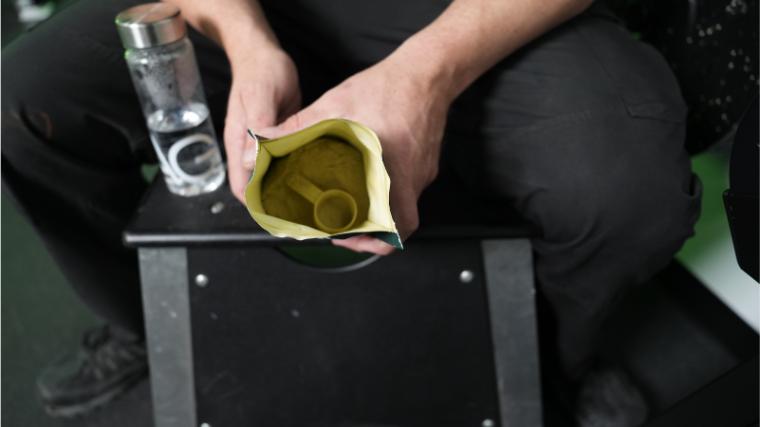
The cost of Athletic Greens AG1 does decrease slightly to $79 per month if you sign up for a monthly automatic subscription. Without a subscription, AG1 costs a shocking $3.30 per serving; with a subscription, it costs $2.63 per serving.
Registered dietitian Chelsea Rae Bourgeois, M.S., RDN, LD, says, “The cost is the biggest turn-off for me with this product. AG1 Athletic Greens may help boost your intake of important nutrients, but it definitely comes at a cost — and the cost ain’t cheap!”
A one-time purchase of a 30-serving tub of Green Vibrance, on the other hand, costs about $50. That comes out to $1.65 per serving. If you sign up for a subscription, the cost reduces to $43.40 for a 30-serving tub, making the cost per serving about $1.45. You can garner even more savings by choosing to buy a larger tub: The 60-serving tub costs $74.90 with a subscription or $1.25 per serving.
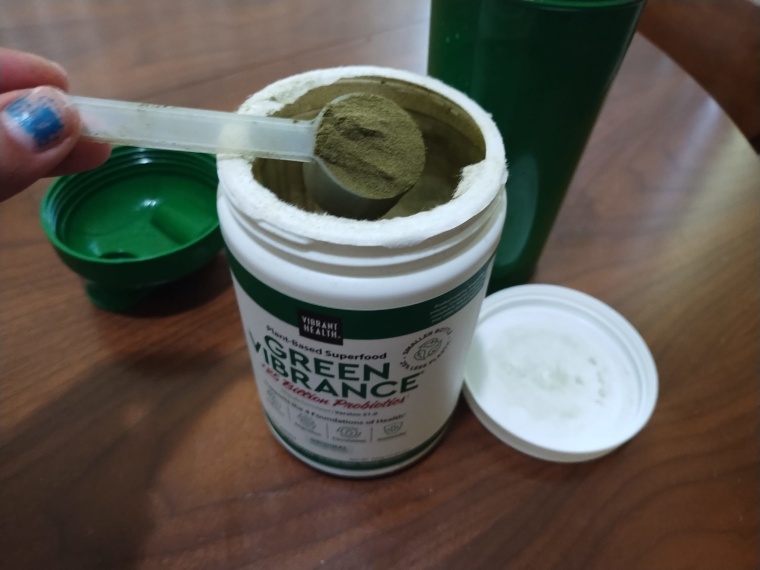
Athletic Greens doesn’t offer a bulk size for savings.
The Winner: Green Vibrance
Third-Party Testing
Part of the high cost of Athletic Greens AG1 could be due to the fact that the product is heavily tested. Each production batch of AG1 undergoes testing for nearly 1,000 impurities, including heavy metals, pesticides, and herbicides. It’s unclear if this portion of testing is performed by independent labs or in-house. AG1 is independently tested for nearly 300 substances that are banned in sports, and is certified with the NSF Certified for Sport mark.
Athletic Greens has also conducted clinical research on its products, including in-vitro studies, clinical trials, and observational studies to understand both the molecular and big-picture effects of the supplement.
While one would hope that all researchers uphold scientific ethics, it’s important to note that these studies were funded by Athletic Greens and some of the researchers were or are employed by AG1; the funders also took part in the design and/or execution of one or more studies. None of this necessarily means the research is flawed, but it’s always wise to take nutritional claims with a grain of salt. (1)(2)(3)(4)
Unfortunately, AG1 does not seem to be tested for potency. This would be an excellent addition to the value of the product, because the AG1 formula consists entirely of proprietary blends — meaning we have no way of knowing how much of each ingredient is present in the powder. Thus, we can’t make a calculated analysis about the potency or efficacy of the supplement by comparing it to clinically validated doses of each ingredient.
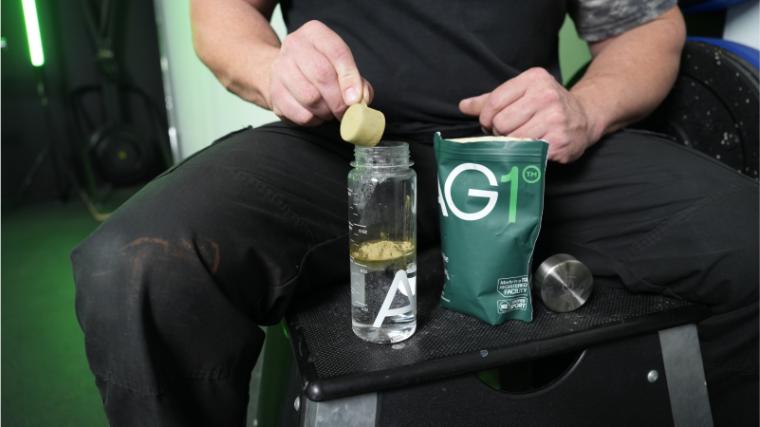
Green Vibrance does not appear to have third-party testing certifications at the time of writing. That said, this supplement offers transparency in a different way. Instead of using proprietary blends, which shroud the true quantity of included ingredients, Green Vibrance discloses the exact amount of each and every ingredient on the label, allowing consumers to compare the doses to clinically validated doses if they wish.
Bourgeois, a registered dietitian, agrees: “Most greens powders hide their claims in proprietary blends, but not Green Vibrance. I’m still waiting on conclusive evidence that greens powders are as beneficial as they claim to be, but in the meantime, I appreciate the transparency that Green Vibrance offers in their product…Green Vibrance offers some decent transparency in their ingredients list. No proprietary blends in this greens powder.”
Still, because it’s not tested for impurities (or the certifications of analysis are not publicly available), we can’t know for sure whether there are any metals, pesticides, herbicides, or other impurities in the product.
The Winner: Athletic Greens
Standout Ingredients
Both of these greens powders contain more than 50 ingredients purported to support overall health and wellness, including the immune system, energy levels, focus and cognitive function, gut health and digestive health, sleep, and more. (5)(6)(7)(8)(9)
Across the two green drinks, the ingredients lists have a lot of overlap: Leafy green powders, barley grass, chlorella, spirulina, wheatgrass, beetroot, green tea extract, various other phytonutrients, antioxidants, probiotics, and more are present in both blends. Both are high in essential vitamins and minerals like vitamin A, vitamin C, magnesium, and calcium, too.
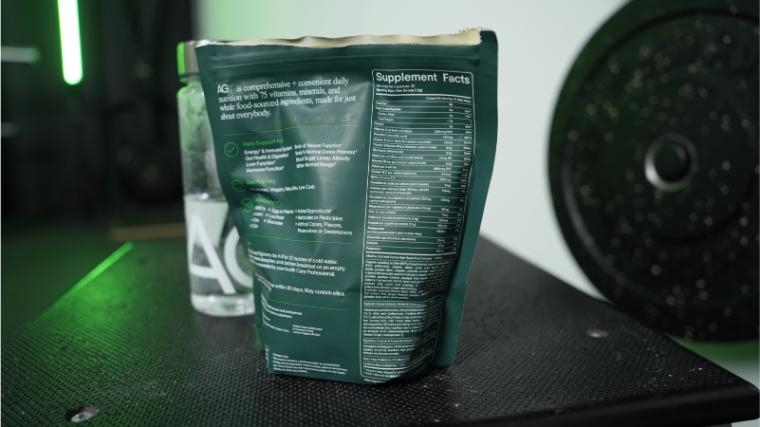
AG1 contains significantly more adaptogens, such as astragalus and ashwagandha, than Green Vibrance, whereas Green Vibrance contains significantly more probiotics and digestive enzymes.
But there’s one big difference all shoppers should be aware of: All Green Vibrance ingredients are listed with their exact quantity, while all AG1 ingredients are listed as parts of proprietary blends, making it impossible to know how much of each item is in the powder.
Bourgeois says this is a major downfall of AG1. “Unfortunately, you don’t really even know what you’re spending your money on,” she explains. “On a budget, I’d be more inclined to add more nutrient-dense whole foods to my diet to obtain the same effects.”
“AG1 Athletic Greens gets a 3 out of 5 for its formulation, with major deductions for its proprietary blends and cost,” Bourgeois continues. “For many, the cost doesn’t match the purported benefits.”
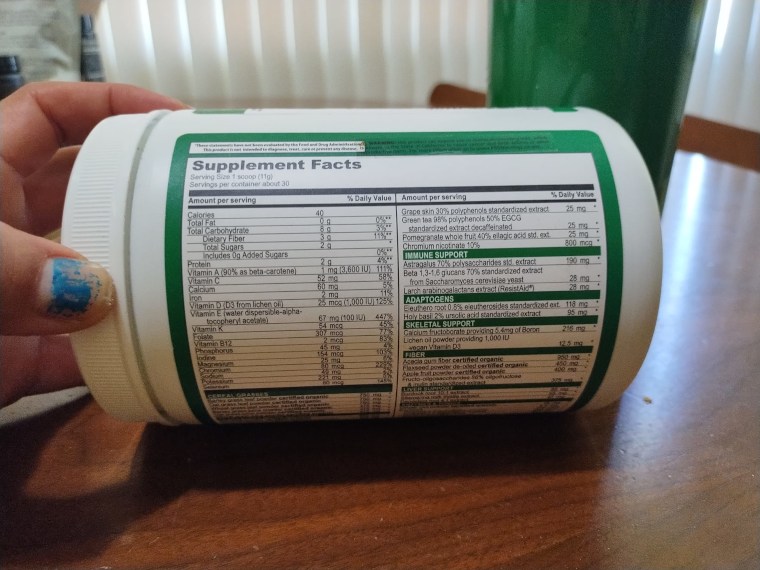
She gives the same 3 out of 5 ranking to Green Vibrance, noting that “this formula offers more transparency on its supplement facts label than many competing brands. Through that transparency, we can see that it contains many impressive ingredients, contributing to some stacked nutrition facts.”
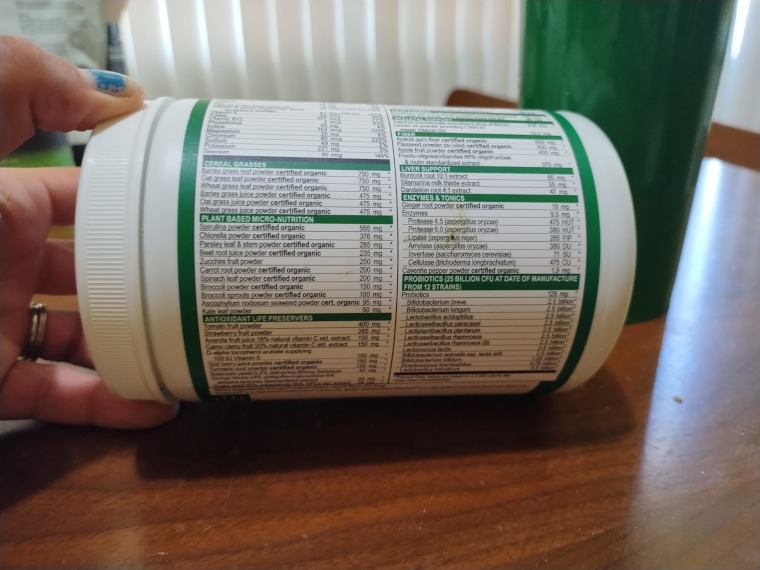
Indeed, our team of fitness and nutrition professionals loves the fact that Green Vibrance ingredients, many of which are organic ingredients, are disclosed in the exact quantities on the label.
The Winner: Green Vibrance
Nutrition Per Scoop
Unlike the best meal replacements, greens supplements do not intend to replace a full meal’s worth of nutrition, so keep that in mind when weighing the nutrition per scoop. While they do contain carbs and potentially some protein and fat depending on the ingredients, these supplements are best served alongside a meal or with a snack.
“Green Vibrance boasts an extensive supplement facts label, especially compared to other greens powders on the market,” Bourgeois explains. “However, I still encourage you to do your research on the nutrients provided in the product and see how much you’re getting in your regular day-to-day diet.”

This advice holds whether you ultimately choose AG1 or Green Vibrance. Either way, you’ll want to know the stats behind the scoop. Per scoop, calories and macronutrients are almost identical between the two powders.
Green Vibrance contains:
- 40 calories
- 8 g carbs (3 g fiber, 2 g sugar)
- 0 g fat
- 2 g protein
AG1 contains:
- 50 calories
- 6 g carbs (2 g fiber, <1 g sugar)
- 2 g protein
- Fats are not disclosed on the label
Both powders also provide hefty doses — nearly or more than 100% of the daily recommended value — of most vitamins and minerals. Additionally, both supplements are non-GMO, dairy-free, and gluten-free. Both could be considered keto-friendly, as they contain 8 and 6 grams of carbohydrates, respectively. Finally, both formulas are vegan-friendly, too.
The Winner: It’s a tie.
[Related: High-Fiber Foods to Support Digestion]
Sweeteners Used
AG1 uses stevia, along with natural flavors (flavoring agents that come from plant or animal sources), to make the powder more palatable. Green Vibrance uses something called Rhovanil Natural Delica flavoring, a rice-based flavoring agent that has a slight vanilla taste.
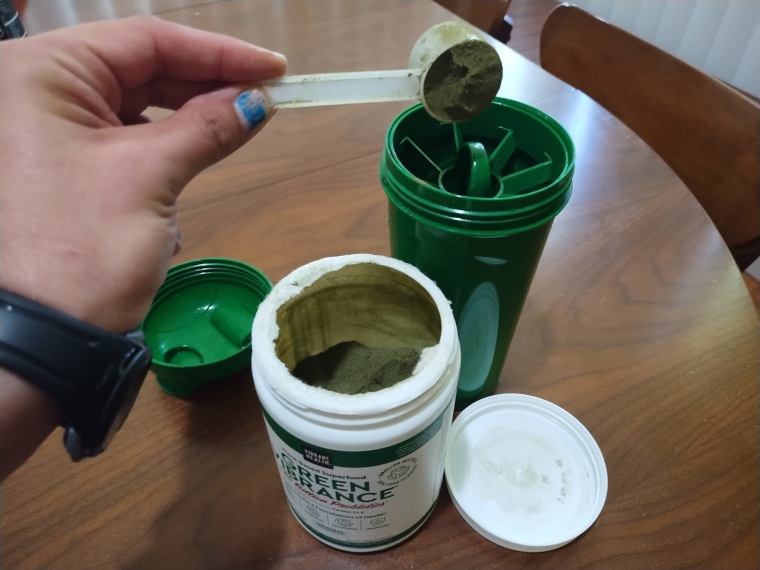
According to our product testers, neither AG1 nor Green Vibrance is the best-tasting greens powder, as both taste quite grassy. The fact that no artificial sweeteners are used in either powder is likely a major bonus for most health-conscious individuals, though.
“Green Vibrance has a very, very strong grassy flavor because there aren’t any added sugars that will cut the intense green taste,” one of our product testers says. “But, I know that’ll be a pro for a lot of people because they may not want added sugars or artificial sweeteners.”
AG1 is sweetened with stevia, which isn’t technically an artificial sweetener. Rather, it’s an “alternative sweetener” that comes from the stevia leaf. Still, some people pick up on a strong aftertaste from stevia, and for others, this sweetener can cause digestive upset.
The Winner: Green Vibrance
Available Flavors
Both products are available in just one flavor: whatever flavor arises from the ingredients blend. As such, both have a rather grassy taste, with hints (and we do mean hints) of sweetness and fruitiness.
“It doesn’t bother me that there aren’t flavor options for Athletic Greens because the grassiness is pretty mild,” one of our product testers says. “But I will say, I detect notes of pineapple and vanilla.”
The Winner: It’s a tie.
Taste
While neither powder is what we’d call delicious, they don’t taste terrible for what they are. In our testing, Green Vibrance doesn’t score too highly for taste with all our testers. “I wish it tasted a lot better than it did,” one tester says. “I give it an unfortunate 2 out of 5 because it just tastes grassy.”
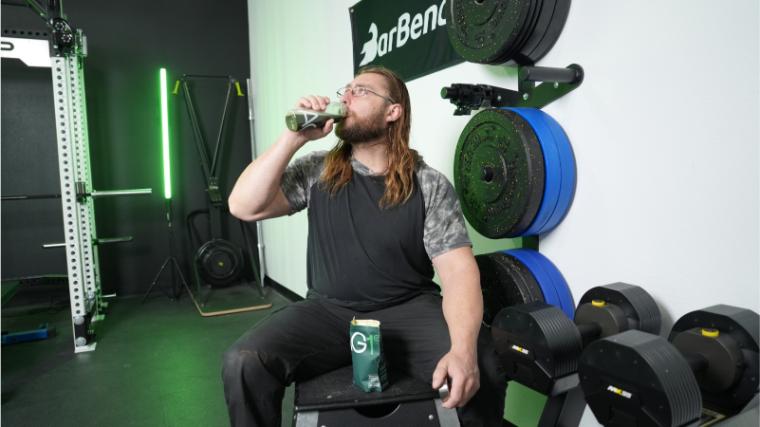
“To me, having a greens powder taste…well, green, isn’t bad,” another tester argues. “If you’re turning to greens powder but you’re trying to reduce that earthy taste, you’ll have to mix this with strong flavors like mango or coconut. That helped cut the taste and give it an enjoyable flavor. It gets a 3 out of 5 from me.”
One of our other product testers, BarBend editorial team member and certified personal trainer Alex Polish, agrees and has their own advice for enjoying Green Vibrance. “I tend to prefer a greens powder that tastes nice and grassy as opposed to hyper sweet. That said, Green Vibrance is quite an intense green taste. My advice if that’s not your thing is to add more water than recommended — I mixed it with 12 to 16 ounces — or add it to a sweet smoothie. Although it’s super strong-tasting on its own, I was pleasantly surprised that it didn’t impact the taste of my cherry-banana protein shake.”
Still, most of our testers found the flavor of Athletic Greens to be much more palatable. “Because the grassiness is so mild, I gave this one a 4.5 out of 5 for taste,” one member of our testing team says.
“It tastes like ‘health,’ but that doesn’t mean it’s bad ,” says another. “I actually really enjoyed it.”
The Winner: Athletic Greens
Solubility
Solubility is an important factor for greens powders — no one wants to force down chunks of powdered veggies.
Some of our testers found that Green Vibrance mixes well overall, giving 4 out of 5 points for solubility. “In a shaker cup, this mixed pretty well. It was alright when I stirred it with a spoon, but I would definitely recommend a shaker.”
Polish agrees, reporting that they didn’t get a lot of noticeable clumps with a shaker cup, and there was no disruption in texture when they blended it into a shake. “I’d give this a 4 out of 5 for solubility,” they say, “especially if you add just a few extra ounces of water.”
For other testers, Green Vibrance didn’t mix as well, according to our product testers. “Spoons or hand mixers are not the way to go here,” one tester says. “A shaker cup, for sure, but if you don’t like any texture in your mouthfeel, I’d probably look elsewhere. I’d give it a 2 out of 5 for solubility.”

Athletic Greens scores a more consistent 4 out of 5 from our testers, with one reporting that, “It mixes up just like you’d hope it would. It’ll settle if you let it sit for a while, but generally, I drink mine in one sitting so it’s not an issue.” Another tester, who also gives Athletic Greens a 4 out of 5 for solubility, recommends a shaker bottle. “Be prepared for just a little grit, but you won’t get any clumps with a shaker bottle, and it goes down nice and easy.”
The Winner: Athletic Greens
Effects
The manufacturers of both greens powders make claims that their supplement can help with immune support, gut health, mental clarity, and more. It’s really tough to gauge the accuracy of such claims in real life, even with hands-on testing. It can take weeks or months to notice the effects of a supplement, and that’s only if you’re ultra-consistent with taking it and controlling for other factors.
That said, our product testers were happy with both powders, despite not noticing any immediate effects. Much of the supplement game is mental, aka making you feel confident that you’re reaching your nutrient goals each day.
“There’s a lot of mystery surrounding the hype of greens powders,” explains Bourgeois, one of BarBend’s expert reviewers and an RD. “You might be surprised to find that a greens powder only adds more to an already met need. A dietitian can help you decide if a greens powder is necessary.”
Whether you’ve had the chance to consult an RD or not, just knowing that you’re adding more micronutrients to your day may give you a similar boost that it gave our testers. “It’s good to know that I’m getting all my micronutrients, even when I’ve got a busy week where I’m ordering out a lot,” says one of our testers about Green Vibrance. “There wasn’t anything really noticeable, which makes sense for a greens powder.”
Polish agrees that the benefits of greens powders seem to be largely psychological as far as they can detect — and they’re OK with that. “Am I missing anything in my diet? Probably. So, a greens powder feels like luxurious self-care and kind of dietary insurance. But I think my favorite effect of having Green Vibrance is that Vibrant Health is a Black-owned company, which is something I always value highly with my purchases.”
Another tester who tried Athletic Greens comments, “Nothing felt overly negative and nothing felt overly positive. That’s standard for this kind of supplement, but it did give me a lot of comfort to know that I’m getting more micronutrients than I otherwise might!”
“There’s no real downside here because it’s packed with all the right stuff—except the price,” says a third tester about AG1. “But if you can afford it, it’s a 5 out of 5 from me.”
The Winner: It’s a tie.
FAQs: Green Vibrance Vs. Athletic Greens
Is AG1 better than Green Vibrance?
Not necessarily. Both of these dietary supplements are high-quality and the greens formulas include more than 50 ingredients that can potentially offer numerous health benefits. As a certified sports nutrition coach, I’m inclined to recommend Green Vibrance because of the lower cost and incredibly transparent label with exact doses listed. Though AG1 has the upper hand on the impurity testing front, it doesn’t appear to be tested for potency, and the proprietary blends leave me questioning the quantities of what’s inside. For its bogglingly high cost per serving, I’d want to know exactly what’s in it and in what amounts.
Is anything as good as Athletic Greens?
Yes, there are other super greens powders that compare to Athletic Greens — Green Vibrance is one of them. With more than 50 ingredients, a transparent label, and a low cost per serving, Green Vibrance is a strong contender among superfood powders.
What is the difference between AG1 and Green Vibrance?
The most notable differences between AG1 and Green Vibrance to me, as a certified sports nutrition coach, are label transparency, third-party testing, and cost. These two green superfood powders include many of the same ingredients, but AG1 disguises the doses behind proprietary blends. That said, AG1 is heavily tested for impurities and Green Vibrance is not. The cost difference — Green Vibrance is half the cost of AG1 — may be enough on its own to influence some buyers.
Which is better, Athletic Greens or Green Vibrance?
Both are worthy supplements. Which is better depends on what you’re looking for. If you can afford the cost of AG1 (minimum of $79/month) and only want to take supplements that are third-party tested, AG1 is the best choice for you. If you can’t afford that or are simply a more budget-conscious shopper, Green Vibrance boasts an equally impressive ingredients list, plus a transparent label, for half the cost. The tradeoff is that it doesn’t hold third-party testing certifications.
References
- Sapp PA, Townsend JR, Kirby TO, Govaert M, Duysburgh C, Verstrepen L, Marzorati M, Marshall TM, Esposito R. AG1®, a Novel Synbiotic, Maintains Gut Barrier Function following Inflammatory Challenge in a Caco-2/THP1-Blue™ Co-Culture Model. Microorganisms. 2025; 12(7):1263. https://doi.org/10.3390/microorganisms12071263
- Trevor O. Kirby, Philip A. Sapp, Jeremy R. Townsend, Marlies Govaert, Cindy Duysburgh, Massimo Marzorati, Tess M. Marshall, Ralph Esposito. Changes in the fecal polar metabolome due to AG1 supplementation in the SHIME® model: A proof of principle study. Journal of Functional Foods, Volume 119, 2025, 106319, ISSN 1756-4646, https://doi.org/10.1016/j.jff.2024.106319.
- Kirby TO, Townsend JR, Sapp PA, Govaert M, Duysburgh C, Marshall TM, Marzorati M, Esposito R. The Novel Synbiotic, AG1®, Increases Short-Chained Fatty Acid Production in the Simulator of Human Intestinal Microbial Ecosystem (SHIME) Model®. Nutraceuticals. 2023; 3(4):489-498. https://doi.org/10.3390/nutraceuticals3040035
- Townsend JR, Kirby TO, Sapp PA, Gonzalez AM, Marshall TM, Esposito R. Nutrient synergy: definition, evidence, and future directions. Front Nutr. 2023;10:1279925. Published 2023 Oct 12. https://doi:10.3389/fnut.2023.1279925.
- Ianiro G, Pecere S, Giorgio V, Gasbarrini A, Cammarota G. Digestive Enzyme Supplementation in Gastrointestinal Diseases. Curr Drug Metab. 2016;17(2):187-193. https://doi:10.2174/138920021702160114150137.
- Panossian A, Wikman G. Effects of Adaptogens on the Central Nervous System and the Molecular Mechanisms Associated with Their Stress-Protective Activity. Pharmaceuticals (Basel). 2010;3(1):188-224. Published 2010 Jan 19. https://doi:10.3390/ph3010188.
- Wu Q, Liu L, Miron A, Klímová B, Wan D, Kuča K. The antioxidant, immunomodulatory, and anti-inflammatory activities of Spirulina: an overview. Arch Toxicol. 2016;90(8):1817-1840. https://doi:10.1007/s00204-016-1744-5.
- Zurbau A, Au-Yeung F, Blanco Mejia S, et al. Relation of Different Fruit and Vegetable Sources With Incident Cardiovascular Outcomes: A Systematic Review and Meta-Analysis of Prospective Cohort Studies. J Am Heart Assoc. 2020;9(19):e017728. https://doi:10.1161/JAHA.120.017728.
- Venturella G, Ferraro V, Cirlincione F, Gargano ML. Medicinal Mushrooms: Bioactive Compounds, Use, and Clinical Trials. Int J Mol Sci. 2021;22(2):634. Published 2021 Jan 10. https://doi:10.3390/ijms22020634.